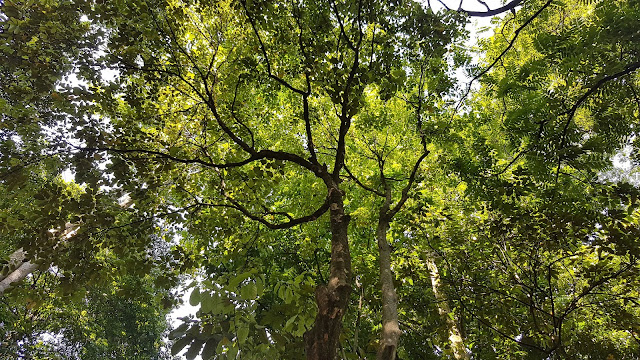Lansium domesticum
Lansium domesticum Langsat atau Duku
Langsat or Duku tree, Lansium domesticum Common Name: Langsat Lansium domesticum Fruits
The globose, orange yellow fruits are smaller, they have a tough pericarp and contain latex. The seeds are not removed when eating the fruit - instead a hole is bitten into the skin and the juice sucked out. Fruit - raw or cooked Juicy, aromatic and subacid. As well as being eaten out of hand, they can be candied, preserves in syrup etc. The fruits are borne in clusters of 2 - 30 and are about 37mm in diameter. Each fruit contains 5 or 6 segments of aromatic, white, translucent, juicy flesh, with 1 - 3 relatively large and very bitter seeds in each fruit.
The pulverized seed is employed as a febrifuge and vermifuge. The bark is poulticed on scorpion stings. An astringent bark decoction is taken as a treatment for dysentery and malaria. Leaves may be combined with the bark in preparing the decoction. The leaf juice is used as eye-drops to dispel inflammation.
 |
| Lansium domesticum |
Langsat or Duku tree, Lansium domesticum Common Name: Langsat Lansium domesticum Fruits
General Information Langsat is an evergreen tree usually growing 10 - 30 metres tall in the wild but generally only 5 - 10 metres in cultivation. The straight, cylindrical bole is irregularly fluted and has steep buttresses that can be 2 metres wide at the base; it can be unbranched for the majority of the tree's height and up to 75cm in diameter. The plant is often cultivated, especially in tropical Asia, where it is considered to be one of the best fruits of the Malay region.
It is mainly grown as a backyard or garden tree and is commonly sold in local markets Known Hazards An arrow poison is made from the fruit peel and the bark of the tree. Both possess a toxic property, lansium acid, which, on injection, arrests heartbeat in frogs.
The seed contains a minute amount of an unnamed alkaloid and two bitter, toxic principles. Domesticum', often called the duku, doekoe, or dookoo, is a more robust tree, broad-topped and densely foliaged with conspicuously-veined leaflets; the fruits, borne few to a cluster, are oblong-ovoid or ellipsoid, with thin, brownish skin, only faintly aromatic and containing little or no milky latex. Duku bears shorter fruit spikes, usually with few fruits.
Generally sweet and aromatic, the fruits are normally larger and more rounded than the langsat fruit, with a thick skin (up to 6 mm) and relatively free from latex. The trees appear to be more suited to the humid tropics. 'Kokossan' is a form found mainly in Java - its trees have the largest flowers and most pubescent leaves.
 |
| Lansium domesticum |
These seeds can sometimes cling very tightly to the flesh and can then impart their bitterness to the fruit. The peel of the langsat is easily removed and the flesh is commonly eaten out-of-hand or served as dessert, and may be cooked in various ways. Varieties with much latex are best dipped into boiling water to eliminate the gumminess before peeling.
The peeled, seedless or seeded fruits are canned in syrup or sometimes candied. Although refreshing, the fruits have one of the lowest vitamin C contents of any fruit grown in Malesia. Medicinal The resin is non-toxic and administered to halt diarrhoea and intestinal spasms. The dried pericarp is used in the treatment of diarrhoea and intestinal spasms, malaria and other fevers. The active principle in the pericarp appears to be a resin.
 |
| Lansium domesticum |
Domestik ', sering disebut duku, doekoe, atau dookoo, adalah pohon yang lebih kuat, beratap lebar dan dedaunan padat dengan selebaran berurat mencolok; buah-buahan, yang ditanggung beberapa kelompok, berbentuk bulat telur atau ellipsoid, dengan kulit tipis, kecoklatan, hanya sedikit beraroma dan mengandung sedikit atau tidak ada getah susu.
'Kokossan' adalah bentuk yang ditemukan terutama di Jawa - pohonnya memiliki bunga terbesar dan daun puber. Buah bulat kuning oranye lebih kecil, mereka memiliki pericarp keras dan mengandung lateks. Biji tidak dibuang saat memakan buah - sebagai gantinya lubang digigit kulit dan sari buahnya disedot keluar. Ada jenis yang diinginkan di setiap kelompok. Beberapa buah kecil benar-benar tanpa biji dan cukup manis. Tanaman ini biasanya menghasilkan buah (dan biji) tanpa pemupukan sebelumnya (parthenocarpic).
Obat Resin ini tidak beracun dan diberikan untuk menghentikan diare dan kejang usus. Pericarp kering digunakan dalam pengobatan diare dan kejang usus, malaria dan demam lainnya. Prinsip aktif dalam pericarp tampaknya adalah resin. Biji bubuk digunakan sebagai obat penurun panas dan vermifuge. Kulit pohon itu diambil dari sengatan kalajengking. Ramuan kulit astringen diambil sebagai pengobatan untuk disentri dan malaria. Daun dapat dikombinasikan dengan kulit kayu dalam menyiapkan rebusan. Jus daun digunakan sebagai obat tetes mata untuk menghilangkan peradangan





0 Response to "Lansium domesticum"
Post a Comment